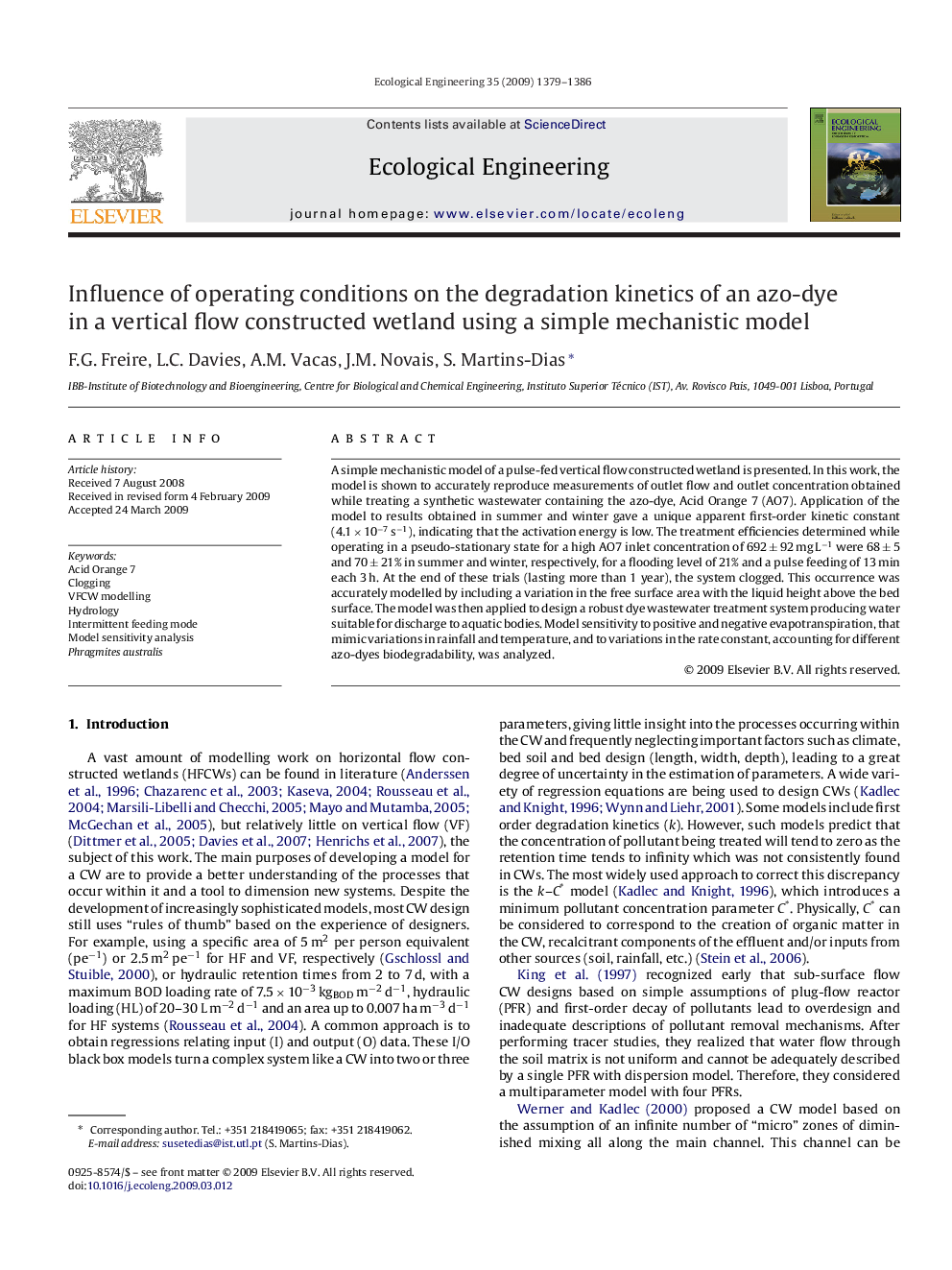| Article ID | Journal | Published Year | Pages | File Type |
|---|---|---|---|---|
| 4390714 | Ecological Engineering | 2009 | 8 Pages |
Abstract
A simple mechanistic model of a pulse-fed vertical flow constructed wetland is presented. In this work, the model is shown to accurately reproduce measurements of outlet flow and outlet concentration obtained while treating a synthetic wastewater containing the azo-dye, Acid Orange 7 (AO7). Application of the model to results obtained in summer and winter gave a unique apparent first-order kinetic constant (4.1 Ã 10â7 sâ1), indicating that the activation energy is low. The treatment efficiencies determined while operating in a pseudo-stationary state for a high AO7 inlet concentration of 692 ± 92 mg Lâ1 were 68 ± 5 and 70 ± 21% in summer and winter, respectively, for a flooding level of 21% and a pulse feeding of 13 min each 3 h. At the end of these trials (lasting more than 1 year), the system clogged. This occurrence was accurately modelled by including a variation in the free surface area with the liquid height above the bed surface. The model was then applied to design a robust dye wastewater treatment system producing water suitable for discharge to aquatic bodies. Model sensitivity to positive and negative evapotranspiration, that mimic variations in rainfall and temperature, and to variations in the rate constant, accounting for different azo-dyes biodegradability, was analyzed.
Related Topics
Life Sciences
Agricultural and Biological Sciences
Ecology, Evolution, Behavior and Systematics
Authors
F.G. Freire, L.C. Davies, A.M. Vacas, J.M. Novais, S. Martins-Dias,
